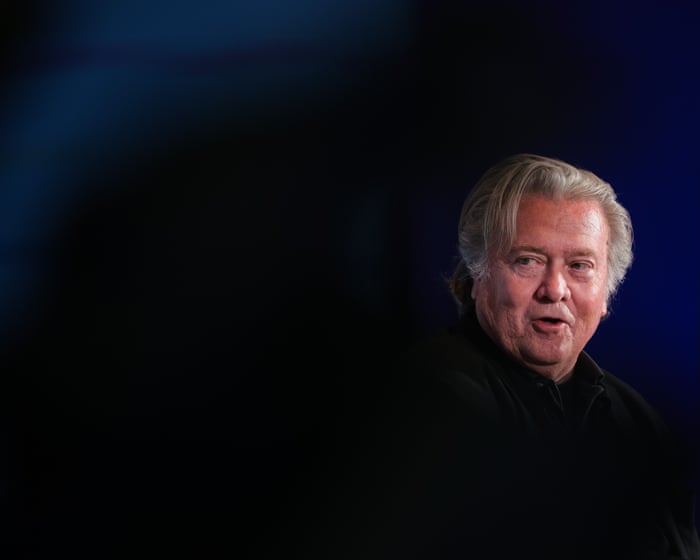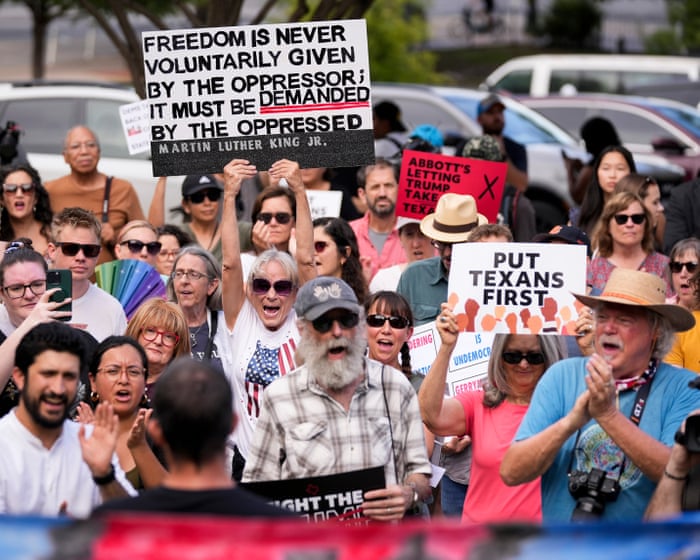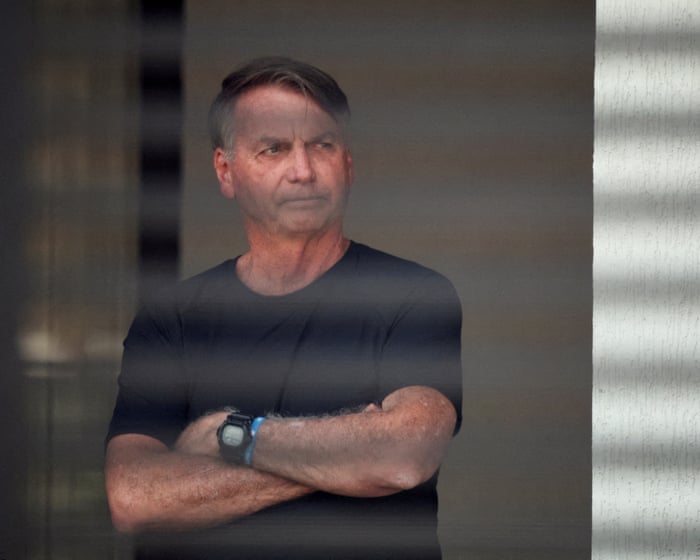Hundreds of text messages exchanged over nearly a year reveal that Steve Bannon, a prominent MAGA influencer, collaborated with convicted sex offender Jeffrey Epstein to develop legal and media strategies aimed at shielding Epstein from the legal and public relations crises that consumed the final year of his life.
Released by the House Oversight Committee on Wednesday, the texts indicate that as early as June 2018, the two were crafting responses to the growing public outrage over Epstein’s criminal past, his lenient treatment by the justice system, and his ties to influential individuals in business, politics, and academia.
Bannon described the renewed focus on Epstein as a “sophisticated op,” and over time, he advised Epstein on how to handle the media, the justice system, and his accusers. Throughout their exchanges, they also strategized on advancing Bannon’s right-wing populist agenda and boosting the political prospects of Donald Trump.
Although Epstein’s messages redact the identity of his contacts, Bannon’s involvement is evident from contextual details, including his known activities at the time, his business and media ventures, and other disclosures. In one document, an unredacted phone number matches one linked to Bannon in a legal case involving Trump advisor Roger Stone.
Bannon did not respond to requests for comment. Earlier this year, when Elon Musk mentioned that “Bannon is in the Epstein files,” Bannon told the Independent he wanted a special investigator to examine all Epstein-related documents.
Their discussions about Epstein’s troubles began before he became widely known as a notorious sex criminal with unusual connections to the Trump administration. Bannon had left the White House in late 2017 but remained active as a MAGA influencer.
On June 22, 2018, shortly after Epstein was targeted at an anti-Trump protest, the two began addressing the emerging scandal. Initially, they viewed it as a publicity issue, with Bannon suspecting a coordinated effort.
Bannon asked Epstein, “Who is running this op on u something serious going on.” Epstein replied, “First a protest at Clinton and then at trump. Lots of people very angry at our friendship.” Bannon responded, “It’s an op dude—I do this for a living—the pieces that are dropping are deeply researched,” adding, “This is sophisticated op.”
By November, extensive coverage by the Miami Herald brought Epstein’s crimes, connections, and apparent leniency into the spotlight. By December, Epstein was not only feeling pressure but also considering his potential to harm the Trump administration.
On December 18, an unknown contact tried to reassure Epstein, writing, “It will all blow over! They’re really just trying to take down Trump and doing whatever they can to do that…!” Epstein responded, “yes thx. its wild. because i am the one able to take him down.”
In early February 2019, Bannon shared a link from Zero Hedge quoting Republican Senator Ben Sasse on the matter. Epstein replied, “Yes/ wild,” and linked to a Fox News report on the same topic. He then sought Bannon’s advice: “Continue to ignore? Ann Coulter on hannity/. Attack? Op ed , ? Not my skill set,” adding, “What about the attunes penning something that suggests indignation and lays out some of the facts.”
Bannon responded, “That drives it a week,” prompting Epstein to ask for clarification: “sasse calling me a child rapist , is nuts!!! Sorry do. You mean ignore. , or responding makes it worse. ?” Bannon replied, “I think makes it way worse.” Epstein then suggested, “K, what about Ken talking directly to sasse.” Bannon answered, “Won’t help but yes.”
The reference to “Ken” remains unclear in this context.Other exchanges often mention Epstein’s connection to Ken Starr, the special counsel who investigated Bill Clinton during the Lewinsky scandal. Starr later represented Epstein in his 2007 sex crimes case and Donald Trump in his 2020 impeachment trial. Starr passed away in 2022.
Later that month, in what seems to be part of the same discussion, a correspondent—likely Steve Bannon, though this document lacks clear context—advised, “If you do an interview, it can’t be amateurish like ‘Johnnie does a YouTube.’ It needs to be highly professional and perfectly edited.”
Epstein’s reply highlighted how damaged his public reputation was: “Woody said he’d help with editing. I’m unsure about the setup or key points, but it’s better than me attempting an interview I’m not experienced in. The goal is to humanize the monster. Written statements don’t carry much weight.”
Bannon agreed, and Epstein then sought his input on the film’s format, drawing on Bannon’s production background: “Should it be an interview? Who should interview me, or just me speaking to the camera? Include humor? An apology? How I made my money? What topics?”
There was no direct text reply, but their messages suggest they often spoke on the phone.
The following day, Epstein criticized his accusers, stating, “One key point for the public is that the girls used the agreement to get money and only later tried to invalidate it.”
By April, they were apparently working on a film to restore Epstein’s image.
On April 30, Epstein noted, “The Christians I met with find it deeply troubling and offensive that the media portrays me as beyond redemption.”
Bannon strategized in response, “Yes, of course—but we have to counter the ‘rapist who traffics young girls to be assaulted by the world’s most powerful, wealthy men’ narrative. That’s seen as irredeemable. So, we let them overstate their case while highlighting the 12 you’ve helped redeem.”
He added, “You can’t redeem the unredeemable. You have many sides we’ll show, but you are NOT that.”
Bannon then asked, “Did you get the film we shot?”
Epstein replied, “Just landed.”
They then discussed funding the film in a way that would hide Epstein’s role.
Bannon inquired, “Are you ready with your part? Can we film this weekend?”
Epstein asked, “How many people would you bring?”
Bannon answered, “Small crew—five at most, probably three.”
Later, Epstein queried, “Did your team prefer me with or without a beard?” Bannon responded, “Light stubble.”
In 2024, reports revealed Bannon had recorded about 15 hours of Epstein for a planned documentary to address his public relations issues.
In May 2019, Bannon supported Epstein as he implemented a professional media strategy following increased attention after the Miami Herald’s exposé on his past plea deal, which sparked ongoing news coverage. He texted, “Did you hire the crisis communications guy so we can steer the narrative from that great Times piece?”
Epstein replied, “He’s with me now. He advises sticking to legal arguments—a deal is a deal—and addressing the rest in a few months.”
He again acknowledged his image problem: “We need to decide how to handle the ‘pervert hermit’ image and replace it with a new story.”
Bannon agreed, “How are we ‘sticking to the legal legal legal’?”
Epstein explained, “Through articles by legal experts, professors, lawyers, etc. I’m focused on that now.”
Bannon expressed relief, “You had me worried—good that you’re focused.”
On May 28, both expressed frustration over Epstein’s mention in Michael Wolff’s book “Fire and Fury,” the first in a series about Trump’s political career. Epstein wrote, “I’ve seen parts of Wolff’s book. It mentions me and underage prostitutes. Yo”You’re the man both behind and in front of the curtain. There are many quotes from Steve—lots of them.
Bannon replied, “Ugh—anything bad? I wish he hadn’t done that. Why are you mentioned at all?”
Epstein answered, “Palm Beach house purchase. Don’t reach out to Michael,” and then shared details about how Wolff portrayed Epstein.
Bannon responded with, “Ugh.”
He also said “ugh” to a link Epstein sent separately to a Raw Story article rehashing the real estate deal that Wolff claimed ended Trump’s and Epstein’s friendship.
As the case gained attention, Bannon often encouraged Epstein, and at one point shared in a late burst of false hope.
On June 25, just weeks before Epstein was dramatically re-arrested, he texted Bannon a headline: “Jeffrey Epstein plea deal must stand, prosecutors tell sex abuse victims.”
Bannon replied, “Dude!!!! Is this real? Tell me this is real,” and later asked, “Is that out anywhere yet?”
Epstein responded, “Miami Herald. But more and better July 9.” The Miami Herald had indeed published that story the same day.
Bannon replied, “Epic epic epic.” Epstein was arrested on July 7.
In May, during a conversation mostly about U.S. and international politics, Epstein complained about a detail in a New York Post article on his Virgin Islands property, writing, “Underwater office? How crazy are these people?”
On June 3, during a state visit to the UK, Trump and his wife Melania were escorted by Prince Andrew to a war memorial.
That same day, Epstein texted Bannon: “Prince Andrew and Trump today. Too funny,” adding, “recall Prince Andrew’s accuser came out of Mar-a-Lago.”
Bannon responded, “Can’t believe nobody is making you the connective tissue.”
This exchange included an unredacted phone number matching one linked to Bannon in 2019 court documents.
Throughout 2018 and 2019, Epstein and Bannon, among others, criticized the progress of the #MeToo movement.
As his own troubles mounted, Epstein advised Bannon on how to challenge Christine Blasey Ford’s accusations against Supreme Court nominee Brett Kavanaugh during his confirmation hearings.
On September 30, 2018, Epstein told Bannon that Republicans should “make sure they ask Ford about her medications—what type and for how long. My guess is that Katz won’t let her answer.”
Bannon replied, “Roger,” and Epstein sent a link to an article claiming to detail memory loss from various medications.
Bannon asked, “Is this a hint?” Epstein replied, “Duh,” and sent another link, this time to a scholarly article titled “False memories in social anxiety disorder,” adding, “She couldn’t recall if the lie detector was given the same day as her mother’s funeral or the next day. MEDS.”
Frequently Asked Questions
Of course Here is a list of FAQs about the reports of Steve Bannon advising Jeffrey Epstein designed with clear natural questions and direct answers
Basic Understanding Facts
1 Who is Steve Bannon
Steve Bannon is a former political strategist who served as the chief executive of Donald Trumps 2016 presidential campaign and later as a White House senior counselor
2 Who was Jeffrey Epstein
Jeffrey Epstein was a wealthy financier who was a convicted sex offender He was arrested in 2019 on new federal charges for sex trafficking of minors and died by suicide in jail while awaiting trial
3 What is the core of this news story
The story is based on leaked text messages that allegedly show Steve Bannon spent several years advising Jeffrey Epstein on how to improve his public reputation and manage the media fallout from his sex crime charges
4 When did this advising reportedly happen
The advising reportedly took place over a period of years primarily after Epsteins first conviction in 2008 and leading up to his 2019 arrest
Deeper Context Implications
5 What specific advice did Bannon allegedly give
While the full details arent public reports suggest the advice focused on public relations strategies such as rehabilitating Epsteins image through philanthropy and leveraging his connections with influential scientists and academics
6 Why would Bannon advise someone like Epstein
The reported motivations are not officially confirmed Speculation includes professional consulting for a fee a shared interest in political and powerful networks or a strategic alliance Bannon has not provided a detailed public explanation
7 Was this relationship illegal
Providing public relations advice is not in itself illegal The legal and ethical concerns arise from knowingly advising a convicted and accused sex trafficker potentially helping him evade public accountability
8 How were these text messages revealed
The messages were part of a large leak of documents related to Epstein which were reviewed by journalists from various news organizations
9 Has Steve Bannon commented on these reports
Bannon has generally downplayed the relationship He has acknowledged knowing Epstein but has characterized their interactions as minimal and not a close advisory role often disputing the extent of the involvement reported in the media
10 What are the potential consequences for Bannon
The immediate consequences are primarily reputational It damages his public image and credibility It could




